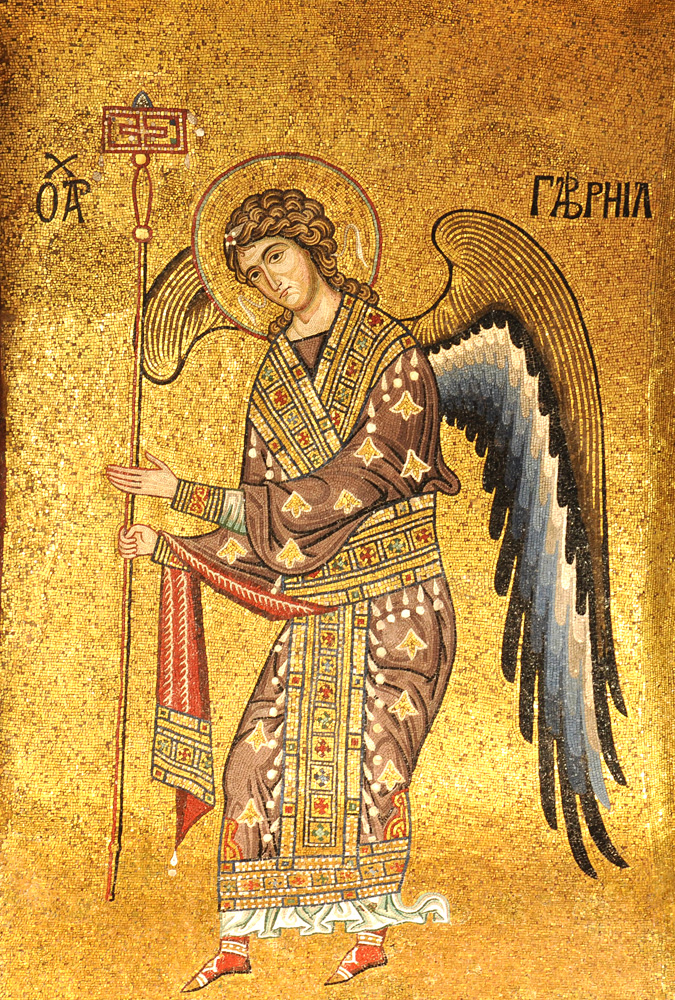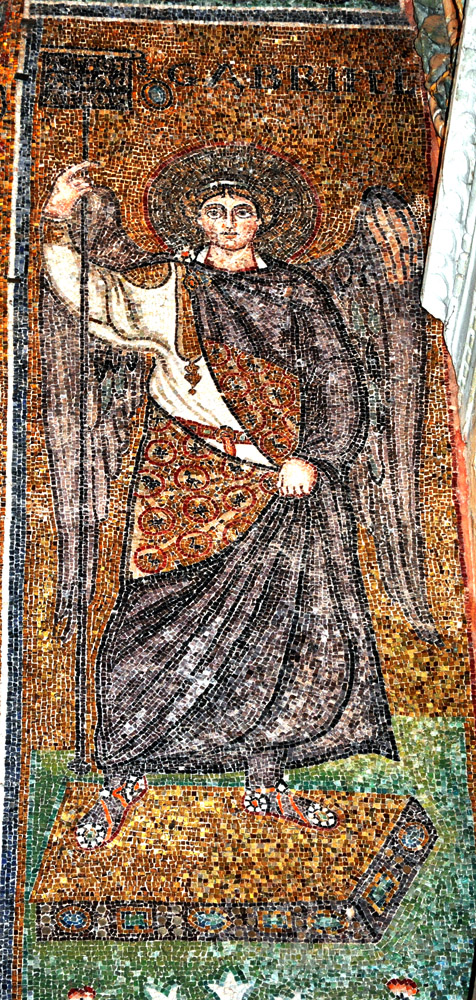In the early portraits studied in Weitzmann's The Icon Gabriel is usually dressed as an imperial official and is paired with Michael. The two will hold military standards and flank a throned figure or sacred space. This pattern can be seen in the West as late as this fresco in Catalonia. Weitzmann explains that in the earliest images an archangel would be holding a globe, but "after iconoclasm the globe was sometimes replaced by an icon of Christ in the form of a clipeus" (a shield).1 However, the clipeus does appear well before the Iconoclastic controversy, as in the third picture at right.
In addition to the globe or clipeus archangels in early images will usually be holding a staff, a sceptre, or a labarum (a military standard with a short cloth and topped by a chi-rho). Like all angels, they are pictured as young men without beards.
By tradition Gabriel is classified as an "archangel." In Luke the word is simply "angel," and in the rest of the New Testament only Michael is called an archangel. In the Old Testament Gabriel appears only in Daniel, where he is called a "man" though he is clearly a messenger from God. His ranking as archangel arises from the Book of Enoch, which numbers him several times among the four chief angels, along with Michael, Raphael, and Phanuel. Enoch 70:4 refers to Michael as "one of the archangels," and on this hint Christians came to refer to all four by that honorific. 2
Prepared in 2016 by Richard Stracke, Emeritus Professor of English, Augusta University. Revised 2017-04-14.
HOME PAGE

A 12th-century mosaic of Gabriel in an Orthodox churcch in Palermo, Sicily. (See the description page.)

Gabriel and Michael are pictured as imperial officials carrying labara and flanking the presbytery at Sant'Apollinare in Classe. (See the description page.)

A mosaic portrait of Gabriel with a clipeus from the mid-6th century. (See the description page.)
MORE IMAGES
- 1726: Giuseppe Torretti's The Archangel Gabriel is in the "Gesuiti" church in Venice, one of four monumental statues of the archangels.
ALSO SEE
NOTES
1 Kurt Weitzmann, The Icon, 64. Weitzmann has examples with the globe on p. 46 and with a clipeus on p. 64.
2 See Daniel 8:16 and 9:21, Luke 1:11,26, Jude 9, 1 Thessalonians 4:15. The Book of Enoch's references to the four chief angels are at chapters 40 et pass. The reference to Michael as one of the archangels is at 70:4, the only time Enoch uses the word "archangel" at all.